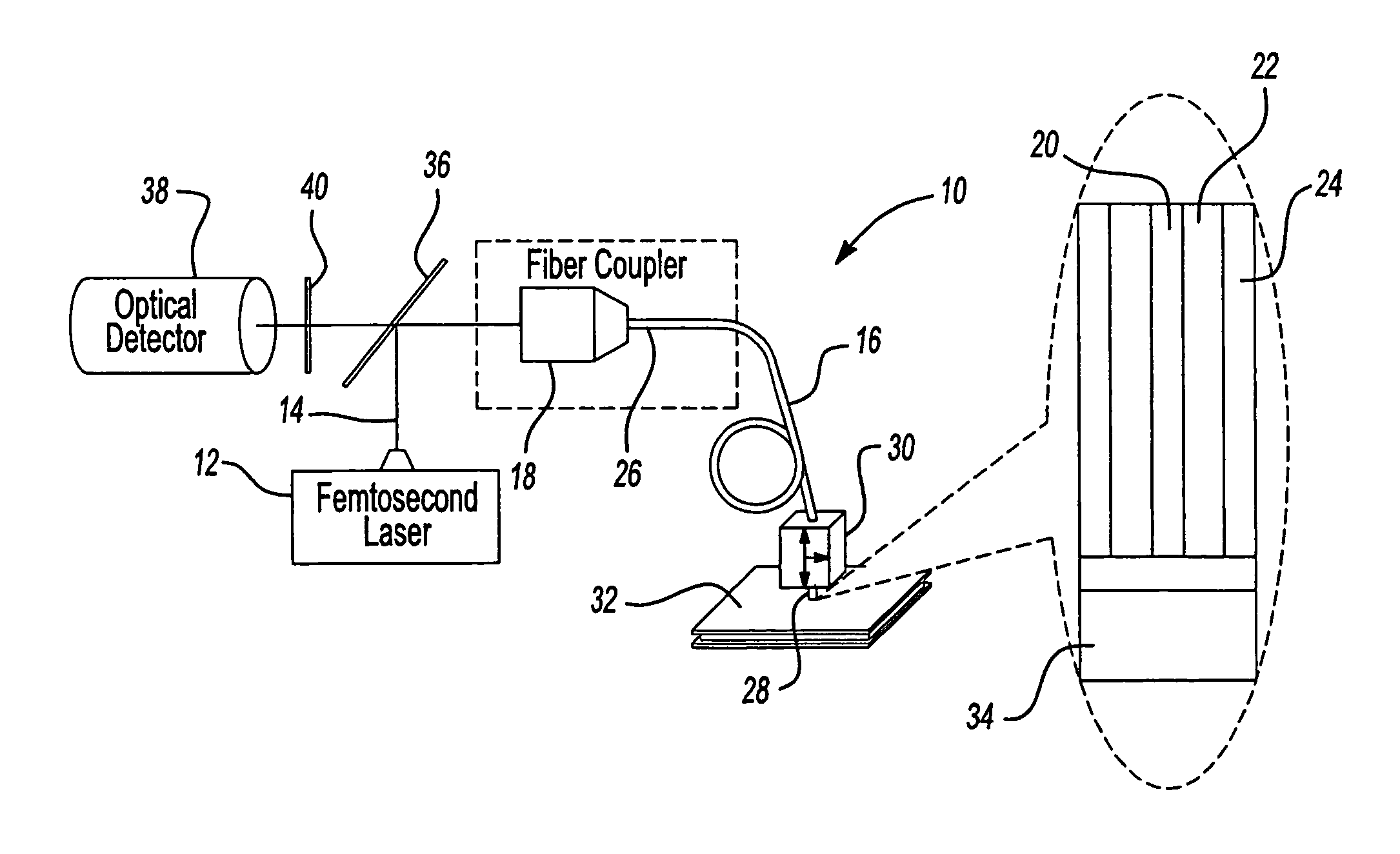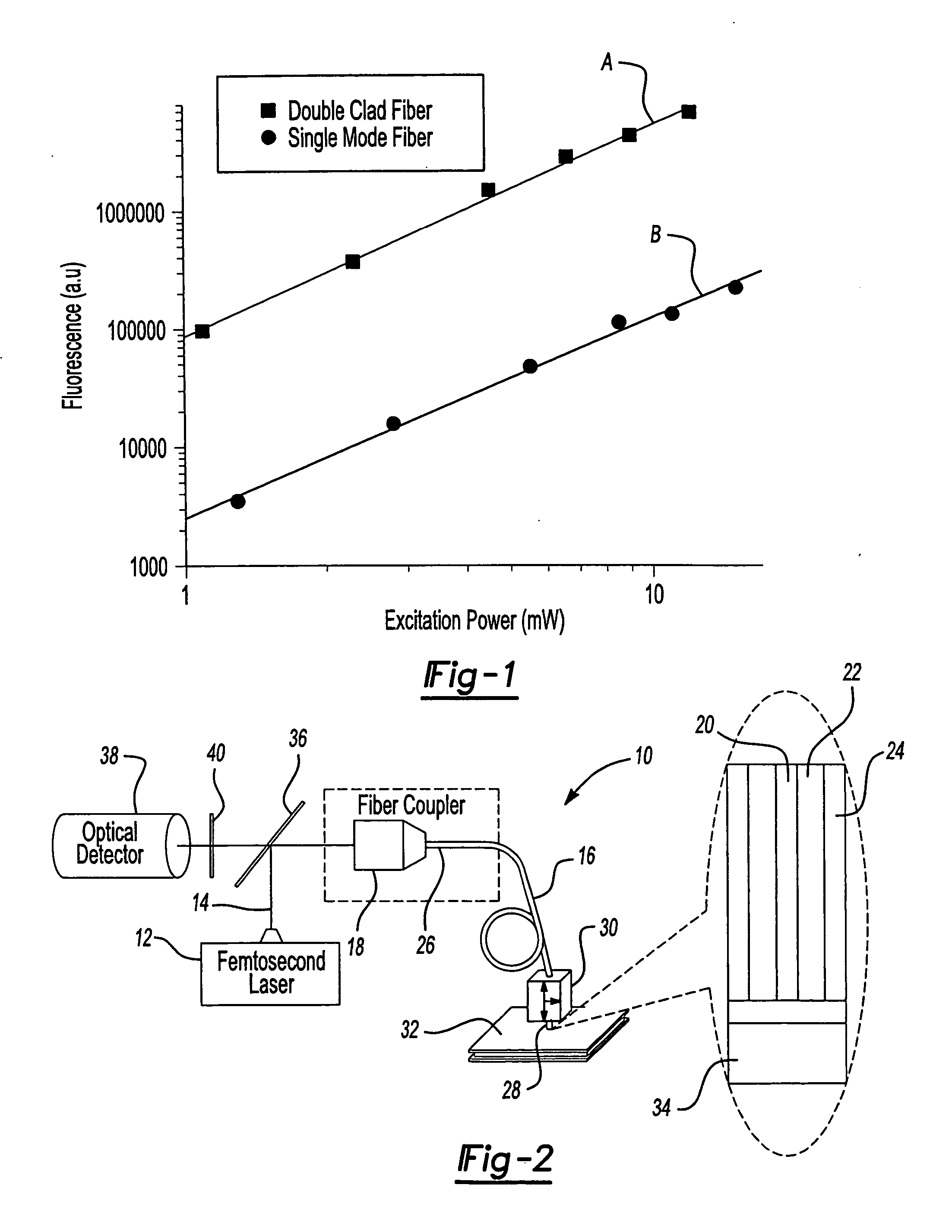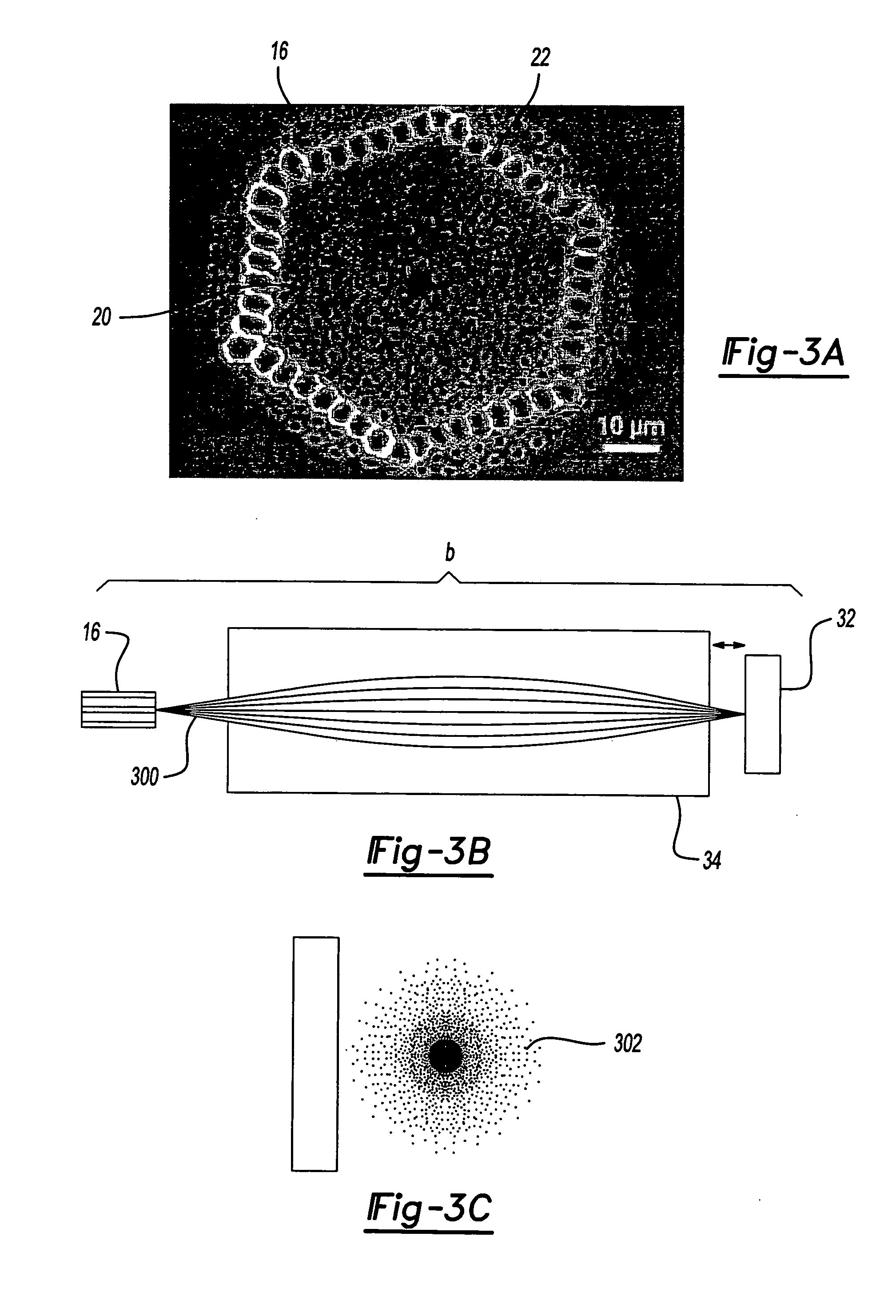Double-clad fiber scanning microscope
a scanning microscope and double-clad fiber technology, applied in the field of scanning microscopes, can solve the problems of limiting the application of scanning microscopes, affecting the scanning rate, and affecting the scanning rate, and achieve the effects of large field of view, high scanning rate, and wide field of view
- Summary
- Abstract
- Description
- Claims
- Application Information
AI Technical Summary
Benefits of technology
Problems solved by technology
Method used
Image
Examples
Embodiment Construction
[0013] The following description of the preferred embodiment is merely exemplary in nature and is in no way intended to limit the invention, its application, or uses.
[0014] In contrast to conventional beam scanning, which includes changing the angle of an incident beam at an objective lens, the beam scanning of the present invention can be achieved by moving an optical fiber, which delivers a laser beam for excitation and collects signals back along the same fiber. Conventional fibers, either single-mode or multimode fibers, cannot be practically used in this way. Although a single-mode fiber (SMF) has an acceptable mode for excitation, the numerical aperture (NA) is typically only about 0.1, which results in a very inefficient signal collection. On the other hand, although a multimode fiber multimode fiber has a larger numerical aperture that is good for collecting signals, the output mode is unable to be tightly focused, thus resulting in inefficient excitation and low resolution...
PUM
 Login to View More
Login to View More Abstract
Description
Claims
Application Information
 Login to View More
Login to View More - R&D
- Intellectual Property
- Life Sciences
- Materials
- Tech Scout
- Unparalleled Data Quality
- Higher Quality Content
- 60% Fewer Hallucinations
Browse by: Latest US Patents, China's latest patents, Technical Efficacy Thesaurus, Application Domain, Technology Topic, Popular Technical Reports.
© 2025 PatSnap. All rights reserved.Legal|Privacy policy|Modern Slavery Act Transparency Statement|Sitemap|About US| Contact US: help@patsnap.com



